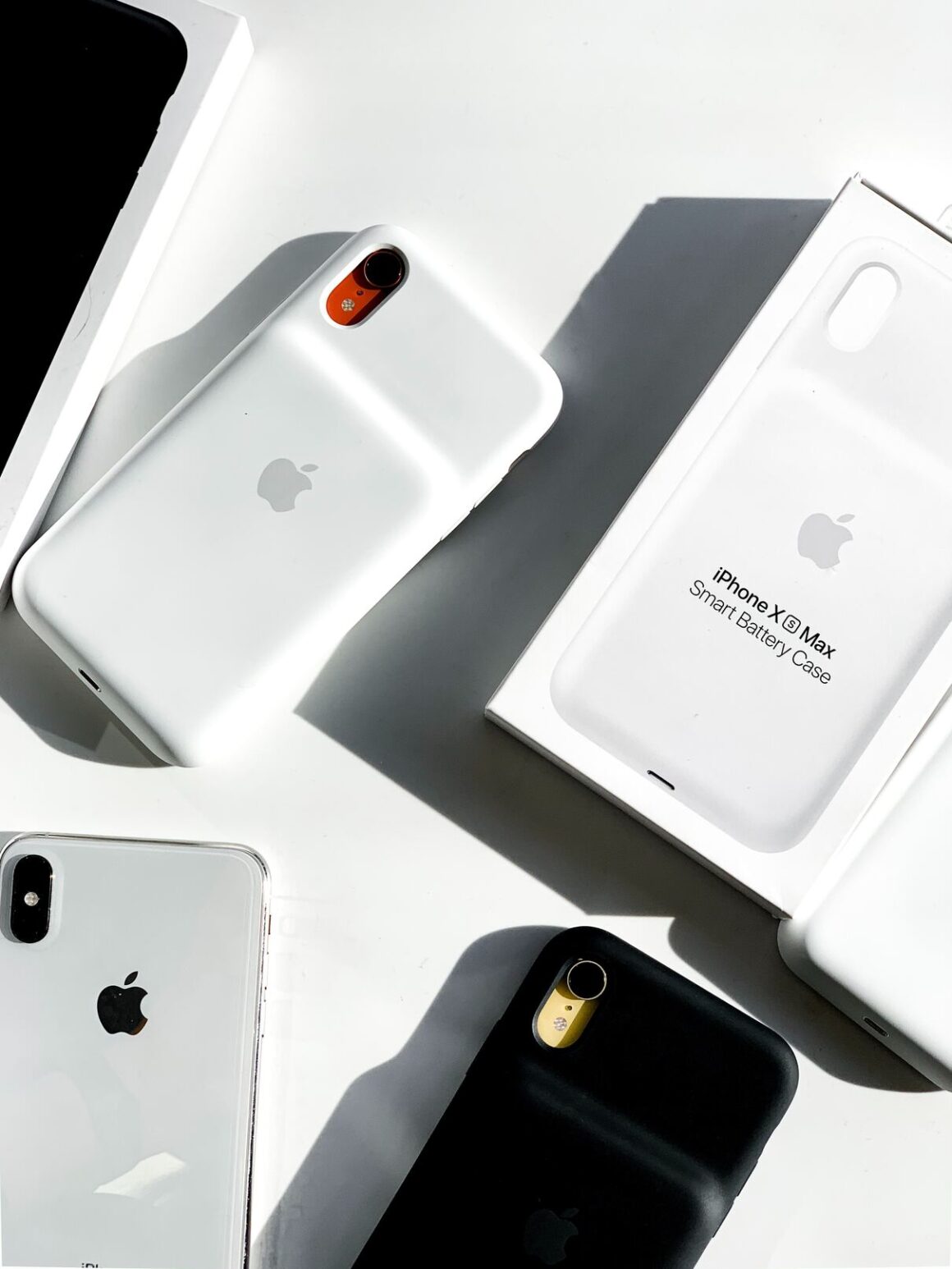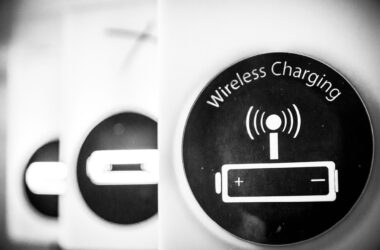Introduction
In an era where smartphones have become integral to our daily lives, innovative phone accessories like wireless charging phone cases are transforming the way we keep our devices powered. This guide dives into everything you need to know about these state-of-the-art gadgets that blend phone protection and charging.
Introduction to Wireless Charging Technology
Wireless charging, an increasingly popular technology, is reshaping the way we power our electronic devices. Unlike traditional charging methods that rely on cords and outlets, wireless charging provides a seamless, efficient, and aesthetically pleasing solution. Here’s an in-depth look at how this technology works and what sets it apart:
How Wireless Charging Works
At the heart of wireless charging is the principle of electromagnetic induction. Here’s a step-by-step breakdown:
- Transmitter Coil: A coil inside the charging pad or dock creates a magnetic field when connected to an electrical source.
- Receiver Coil: Inside the wireless charging phone case or device, a corresponding receiver coil is placed.
- Energy Transfer: The magnetic field generated by the transmitter coil transfers energy to the receiver coil in the form of an oscillating magnetic field.
- Conversion to Electricity: The receiver coil converts the magnetic field’s energy back into electric current, which charges the device’s battery.
Key Wireless Charging Standards
In the realm of wireless charging, adherence to specific standards is paramount to ensure compatibility, efficiency, and safety. These standards act as universal guidelines, fostering a coherent ecosystem where devices from various manufacturers can work seamlessly with different charging pads and accessories. Over the years, several organizations have developed distinct standards, each contributing to the broader landscape of wireless charging. Two of the most prominent and widely accepted among these are the Qi (pronounced ‘Chee’) standard and the PMA (Power Matters Alliance) standard. Understanding these key wireless charging standards provides valuable insights into the technology’s interoperability and the potential for cross-platform charging solutions.
- Qi (pronounced ‘Chee’) Standard: Managed by the Wireless Power Consortium, Qi has become the leading standard, with many smartphones and accessories offering compatibility.
- PMA (Power Matters Alliance) Standard: Though less common than Qi, PMA is another noteworthy standard, particularly used in some public charging stations.
Advantages of Wireless Charging
The advent of wireless charging technology has revolutionized the way we power our devices, offering numerous benefits over traditional wired charging methods. Here’s a deeper exploration of the various advantages:
1. Convenience and Simplicity
- No More Cables: Eliminate the tangle of cords cluttering up desks and nightstands.
- Easy Alignment: Many systems offer a generous alignment tolerance, making it simple to place your device and start charging.
- Multiple Device Charging: Some charging pads allow for multiple devices to be charged simultaneously, offering a one-stop solution.
2. Universal Compatibility
- Cross-Brand Charging: With common standards like Qi, you can charge various devices, regardless of brand, on the same charging pad.
- Adaptability: As technology evolves, new devices may still be compatible with existing charging pads, provided they adhere to the same standards.
3. Enhanced Durability
- Less Wear and Tear: Wireless charging reduces physical connections, thereby reducing strain on both charging ports and cables.
- Robust Design: Many charging pads are designed with durability in mind, often more so than traditional charging cables.
4. Aesthetic Appeal
- Cleaner Look: Wireless charging setups often look sleek and modern, with minimalist designs that fit well in various interior designs.
- Customized Options: From built-in furniture charging stations to stylish standalone pads, the aesthetic choices are plentiful.
5. Improved Safety
- Reduced Risk of Electric Shock: No exposed conductors mean less risk of accidental electric shocks.
- Intelligent Power Management: Many wireless chargers come with smart features that control the charging process to prevent overheating or overcharging.
6. Eco-Friendly Options
- Energy Efficiency: Some wireless chargers are designed to minimize energy consumption, going into low-power mode when not in use.
- Recyclable Materials: Certain manufacturers are focusing on using recyclable or eco-friendly materials in the construction of their products.
7. Integration and Accessibility
- Public Charging Stations: Airports, cafes, and other public spaces are increasingly offering wireless charging spots.
- Integration into Vehicles: Many modern cars come equipped with built-in wireless charging pads for added convenience on the go.
Wireless charging technology’s popularity is not merely a trend; it’s a reflection of tangible benefits that cater to modern needs and desires. From the everyday user seeking a clutter-free desk to the tech-savvy environmentalist, wireless charging offers solutions that transcend mere aesthetics. As technology continues to evolve, these advantages are likely to expand, further ingraining wireless charging into our daily lives. The fusion of convenience, innovation, and design encapsulates a future where charging becomes as effortless as placing your phone down, turning the once mundane task of charging into a seamless part of our day.
Types of Wireless Charging
Wireless charging technology has evolved into several distinct types, each with its unique characteristics and applications. By understanding these various forms of wireless charging, consumers can make more informed decisions on the products that best suit their needs. Here’s an in-depth look at the different types of wireless charging:
1. Inductive Charging
- How It Works: Utilizing electromagnetic fields to transfer power between two coils, inductive charging requires close proximity and precise alignment.
- Common Use: This is the most common form found in smartphones and electric toothbrushes.
- Pros: Highly efficient and widely adopted in various devices.
- Cons: Requires precise alignment and offers little flexibility in positioning.
2. Resonant Charging
- How It Works: Unlike inductive charging, resonant charging allows for a small gap between the charger and device, utilizing resonant inductive coupling.
- Common Use: Employed in electric vehicle charging and some modern smartphones.
- Pros: Offers more flexibility in alignment and distance.
- Cons: May be less efficient than inductive charging.
3. Magnetic Wireless Charging
- How It Works: Utilizes magnets to ensure perfect alignment, making charging more efficient and streamlined.
- Common Use: Found in newer iPhone models and accessories.
- Pros: Ensures optimal alignment for efficient charging.
- Cons: Usually brand-specific, limiting cross-device compatibility.
4. Radio Frequency (RF) Charging
- How It Works: RF charging uses radio waves to transmit energy to devices equipped with the appropriate receiver.
- Common Use: Mostly used in small IoT devices, such as medical implants or wearable technology.
- Pros: Can work over small distances, allowing more placement freedom.
- Cons: Generally suited for low-power devices only.
5. Infrared Charging
- How It Works: This method uses infrared light to transmit energy to a device.
- Common Use: Still in experimental stages but has potential in various applications.
- Pros: Allows for more considerable distance between the charger and device.
- Cons: Requires a clear line of sight, making it less practical for everyday use.
6. Solar Wireless Charging
- How It Works: Uses solar panels integrated into the device or accessory to convert sunlight into electrical energy.
- Common Use: Often found in outdoor gadgets and emergency chargers.
- Pros: Eco-friendly and can be a lifesaver in outdoor or emergency situations.
- Cons: Dependent on sunlight and usually less efficient compared to other methods.
The landscape of wireless charging is diverse, and the technology continues to evolve, offering solutions tailored to various needs and preferences. From the precision of inductive charging to the freedom of resonant or RF charging, understanding these types can guide consumers toward the optimal choice. Whether you prioritize efficiency, flexibility, aesthetics, or innovation, there’s a wireless charging method designed with your requirements in mind. As research advances and technology refines, we can expect even more exciting developments in this field, further enriching our wire-free charging experiences.
Top 5 Best Wireless Charging Phone Cases
Wireless charging phone cases are more than just a modern convenience; they are a blend of innovation, style, and efficiency. These smart accessories can transform your device’s charging experience, saving you the trouble of dealing with cords. Here’s a look at five outstanding wireless charging phone cases from reputable brands, along with their pros and cons.
- Apple MagSafe Battery Pack
- Pros:
- Seamlessly integrates with iPhone 12 and later models.
- Offers both protection and additional battery life.
- High-quality build and aesthetic design.
- Cons:
- Relatively expensive.
- Only compatible with specific iPhone models.
- Pros:
- Samsung Wireless Charger Back Cover
- Pros:
- Designed to fit Samsung Galaxy phones perfectly.
- Supports Samsung’s Fast Wireless Charging.
- Maintains the phone’s slim profile.
- Cons:
- Only suitable for certain Samsung models.
- May not offer as much drop protection as bulkier cases.
- Pros:
- Mophie Juice Pack Air
- Pros:
- Universal compatibility with Qi-enabled devices.
- Extra battery life for extended usage.
- Provides substantial protection against falls.
- Cons:
- Some users might find it bulky.
- Battery capacity may not be enough for heavy users.
- Pros:
- OtterBox OtterSpot Wireless Charging System
- Pros:
- Robust protection known from OtterBox.
- Qi-compatible and versatile.
- Includes removable battery pads for on-the-go charging.
- Cons:
- Can be more expensive than other options.
- Design might not appeal to everyone.
- Pros:
- Anker Wireless Charging Case
- Pros:
- Affordable option with quality performance.
- Works with various Qi-compatible devices.
- Sleek design without adding much bulk.
- Cons:
- May not offer as much protection as other brands.
- The charging speed might be slower compared to others.
- Pros:
The blend of convenience and functionality offered by wireless charging phone cases has set a new standard in mobile device management. Whether you prioritize sleek design, battery life, protection, or compatibility, this list encapsulates products that cater to diverse needs. Investing in one of these top-rated wireless charging phone cases ensures you stay charged and connected, no matter where life takes you. Make sure to check the compatibility and features that align with your specific device and preferences as you embrace this innovative charging solution.
Wireless Charging Efficiency: What You Need to Know
Wireless charging has revolutionized the way we power our devices, offering a convenient and cord-free solution. But how efficient is wireless charging, and what factors impact its effectiveness? Let’s dive into the details to understand what you need to know about wireless charging efficiency.
1. Efficiency Compared to Wired Charging
- Wireless Charging: Typically, wireless charging efficiency ranges between 70% to 85%. It means that a significant percentage of the power is transferred from the charger to the device, while some energy is lost as heat.
- Wired Charging: Conversely, wired charging can be more efficient, often reaching up to 95% efficiency. The direct connection minimizes the energy loss.
2. Factors Affecting Wireless Charging Efficiency
- Alignment: Proper alignment between the charging pad and device is crucial. Misalignment can lead to energy loss.
- Distance: The distance between the charger and device plays a role. Greater distances may result in reduced efficiency.
- Obstructions: Cases or other materials between the charger and device can hinder efficiency.
- Charging Standard: Different wireless charging standards (e.g., Qi, PMA) may have varying efficiencies.
3. How to Improve Wireless Charging Efficiency
- Use Quality Chargers: Invest in a reputable charging pad with proven efficiency.
- Proper Alignment: Ensure the device is correctly aligned with the charging pad.
- Consider Case Compatibility: Use cases designed for wireless charging, or remove them during charging.
- Opt for Fast Charging Options: Some wireless chargers offer fast charging, which can be more efficient.
4. Environmental Considerations
- Energy Loss: Though minimal, the energy lost during wireless charging can add up over time. It is an aspect to consider for those conscious of energy conservation.
- Heat Generation: Wireless charging may generate heat, which could have an impact on the device’s battery life in the long term.
5. Future of Wireless Charging Efficiency
- Technological Advancements: With continual research and innovation, wireless charging efficiency is bound to improve.
- Adoption of Universal Standards: A move towards universal standards could optimize and streamline efficiency across devices.
Understanding the factors that affect wireless charging efficiency and how to optimize your charging experience can help you make the most of this innovative feature. From proper alignment to choosing the right charging pad, these considerations can enhance your wireless charging experience. With a continued focus on innovation and standardization, the future looks bright for even more efficient and convenient wireless charging solutions.
Conclusion
The world of wireless charging is a dynamic and ever-evolving landscape, intertwining technology, convenience, design, and innovation. As we have journeyed through the essential facets of wireless charging, from the key standards and types to the top-rated phone cases and efficiency considerations, it’s clear that wireless charging is not merely a trend, but a definitive step into the future.
In the hustle and bustle of our daily lives, the simple act of charging our devices has transformed into an experience that’s free from the tangles of cords and the constraints of plugs. It offers a glimpse into a world where technology serves us with seamless elegance, unobtrusive yet ever-present, an essential partner in our connected lives.
Whether you’re considering the purchase of a wireless charging phone case, curious about the technology’s efficiency, or excited about its potential environmental impact, there’s a facet of wireless charging that resonates with us all.
But what about you? What are your thoughts, experiences, or questions about wireless charging? Have you embraced this technology, or are you still on the fence? Your insights, opinions, and inquiries are the sparks that fuel this ongoing conversation.
Feel free to leave a comment below, share your thoughts, and join us in exploring the electrifying world of wireless charging. Together, we can demystify the invisible currents that power our devices and our lives, one charge at a time. Let’s connect, converse, and charge forward into a wire-free future!








